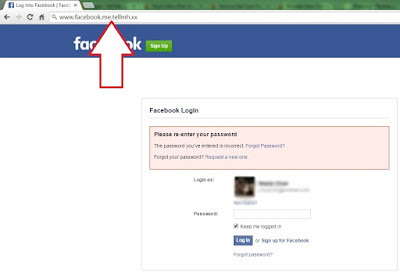We use Facebook as a tool to connect, but there are those people who use that connectivity for malicious purposes even if it's one of the most secure applications on the Internet. People can practically steal our identities and that's just with the visible information we purposely give away through our public Facebook profile.
In this post I'll show you the most common ways that hackers use to hack into someone's Facebook account. I'll also show you how to prevent it from happening to you.
Method 1: The easiest way to "hack" into someone's Facebook is through resetting the password. This could be easier done by people who are friends with the person they're trying to hack.
How to Protect Yourself:
- Use an email address specifically for your Facebook and don't put that email address on your profile.
- When choosing a security question and answer, make it difficult. Make it so that no one can figure it out by simply going through your Facebook. No pet names, no anniversaries, not even third grade teacher's names. It's as easy as looking through a yearbook.
- Learn about recovering your account from friends. You can select three friends you want the password sent to. That way you can protect yourself from a friend and other mutual friends ganging up on you to get into your account.
Read: How to recover your personal data on Facebook
Method 2: Use a Software Keylogger. It's a program that can record each stroke on the keyboard that the user makes, most often without their knowledge. The software has to be downloaded manually on the victim's computer.
How to Protect Yourself:
- Use a firewall. Keyloggers usually send information through the internet, so a firewall will monitor your computer's online activity and sniff out anything suspicious.
- Install a password manager. Keyloggers can't steal what you don't type. Password mangers automatically fill out important forms without you having to type anything in.
- Update your software. Once a company knows of any exploits in their software, they work on an update. Stay behind and you could be susceptible.
- Change passwords. If you still don't feel protected, you can change your password bi-weekly. It may seem drastic, but it renders any information a hacker stole useless.
Method 3: Phishing. This option is the most common method to hack someone's account. The most popular type of phishing involves creating a fake login page. The page can be sent via email to the victim and will look exactly like the Facebook login page. If the victim logs in, the information will be sent to the hacker instead of to Facebook.
How to Protect Yourself:
- Don't click on links through email. If an email tells you to login to Facebook through a link, be wary. First check the URL. If you're still doubtful, go directly to the main website and login the way you usually do.
- Phishing isn't only done through email. It can be any link on any website, chat room, text message etc. Even ads that pop up can be malicious. Don't click on any sketchy looking links that ask for your information.
- Use anti-virus & web security software, like Avast. Read How to Install Avast AntiVirus with a Free Registration.
Method 4: Stealing Cookies. These cookies allow a website to store information on a user's hard drive and later retrieve it. They contain important information used to track a session that a hackers can sniff out and steal if they are on the same Wi-Fi network as the victim.
How to Protect Yourself:
- On Facebook, go to your Account Settings and check under Security. Make sure Secure Browsing is enabled. Hackers can't sniff out cookies over encrypted connections like HTTPS, so try to steer away from HTTP.
- Full time SSL. Use Firefox add-ons such as HTTPS-Everywhere or Force-TLS.
- Log off a website when you're done.
- Use only trustworthy Wi-Fi networks. A hacker can be sitting across from you at Starbucks and looking through your email without you knowing it.
- Use a VPN. These protect against any sidejacking from the same WiFi network, no matter what website you're on as all your network traffic will be encrypted all the way to your VPN provider.
Share the post and help your friends to protect their accounts ;)
Informations collected from WonderHowTo


























